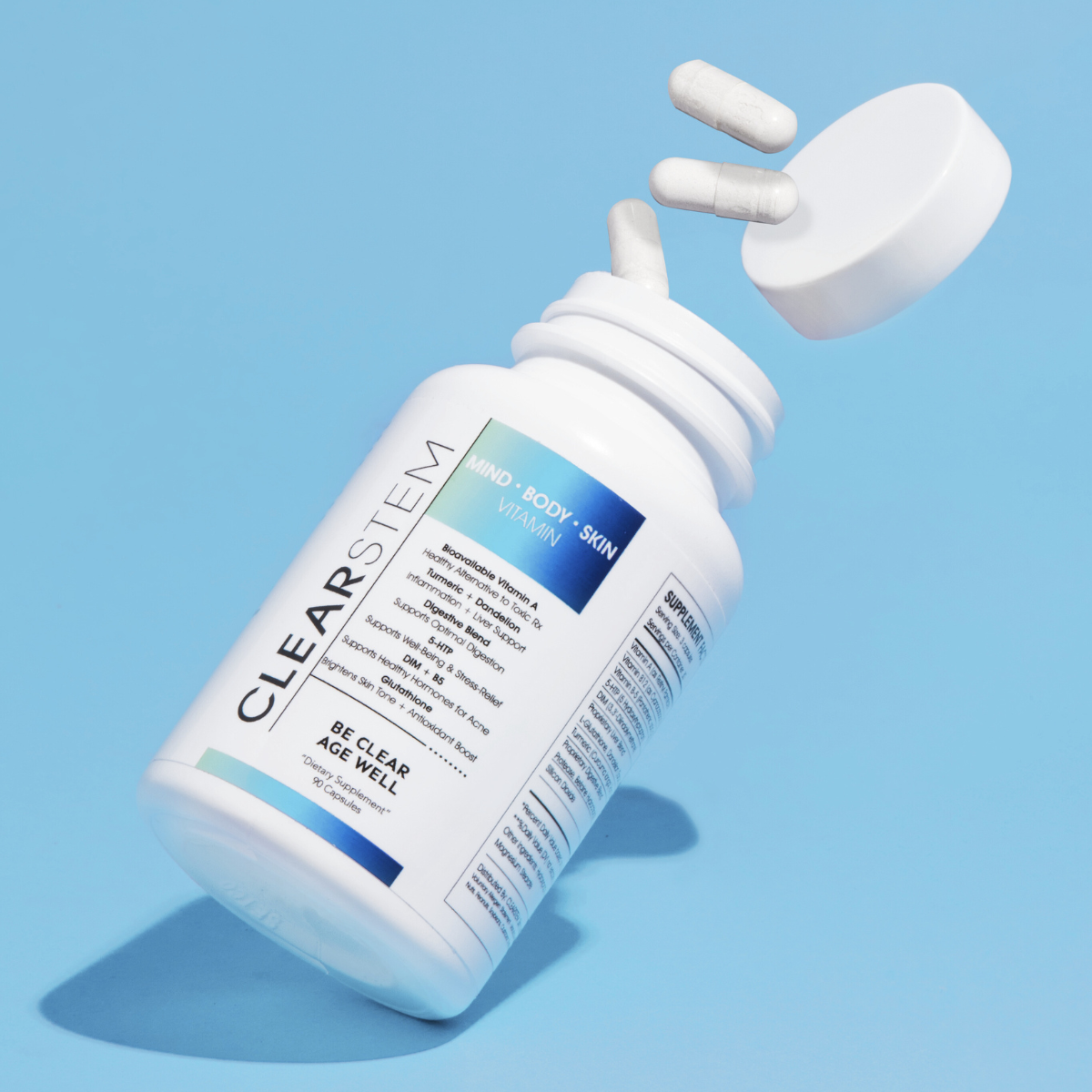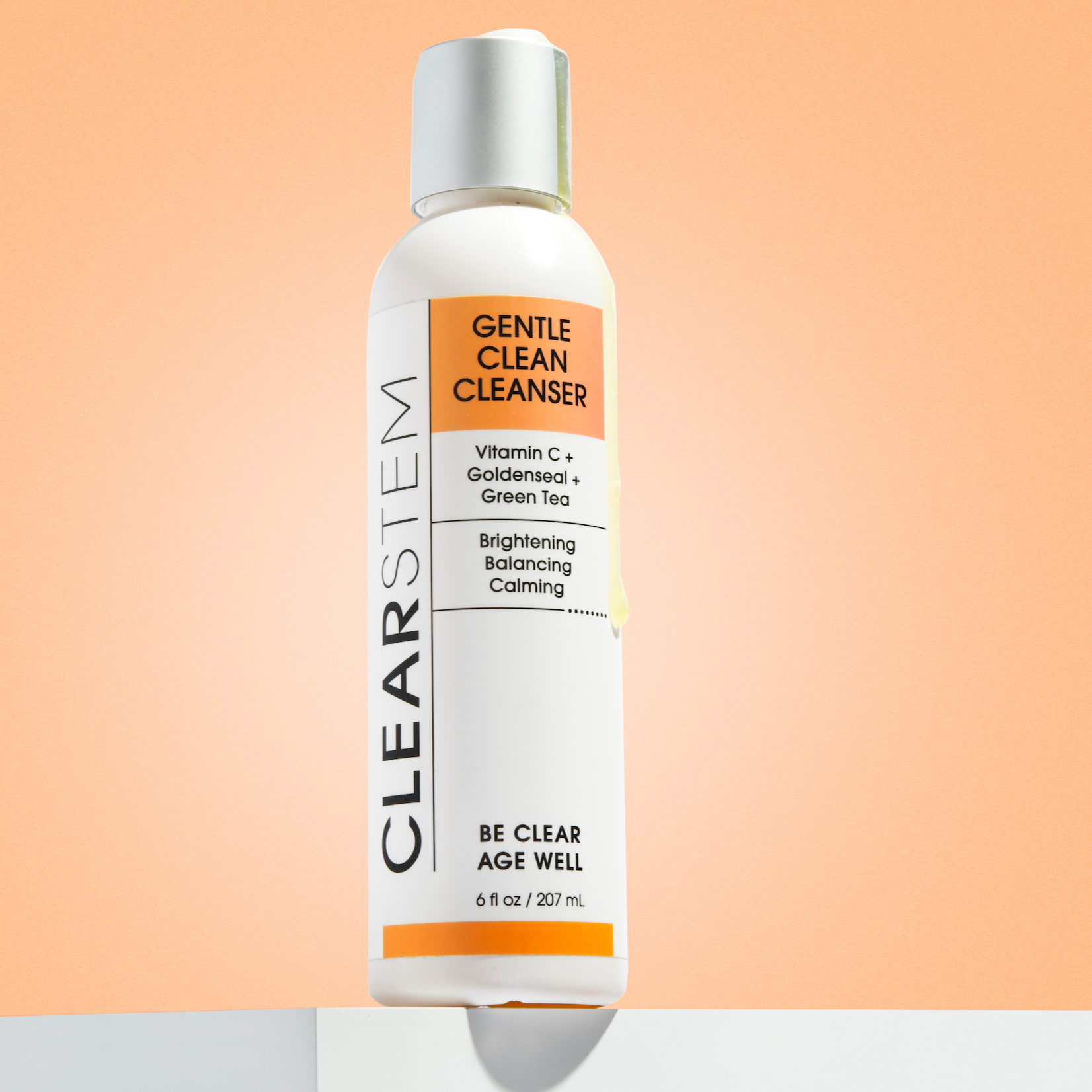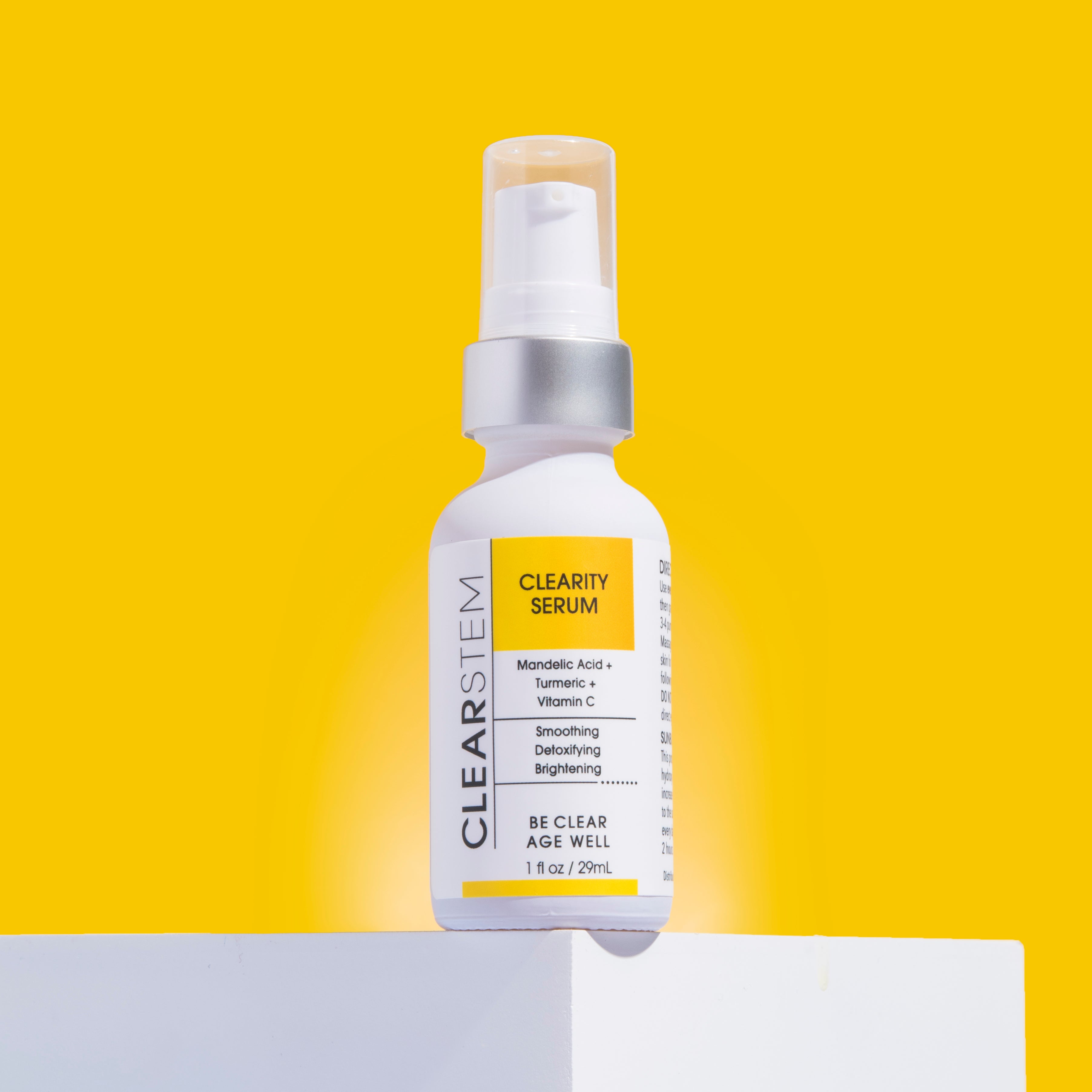When it comes to taking good care of your skin, you probably have a hundred great habits and non-comedogenic skincare products that you spend your precious time doing. You wash your face morning and night, you know which serums and creams to use to tackle your skincare concerns, you work hard to stay hydrated, you avoid sugar and gluten, and you do your research. You’re ON it.1
But have you pinpointed the most important step that keeps your skin healthy and youthful? If you just smiled and said “Sunscreen!!”, you are on the right path, sis.
The fact is, skin damage by the sun, called photodamage, is one of the worst things to happen to the skin. The sun’s rays have been implicated in everything from skin cancer to melasma and even those fine lines and wrinkles that have seemingly cropped up on your face overnight.2It is estimated that about 80% of visible aging is related to UV exposure.
But here’s the thing. We all know how important it is to use sunscreen. After all, it’s been drilled into us for the past three decades and we’ve all seen cautionary tales of sun-worshipers from the ’70s and ’80s who look a hundred now.
However if you’re acne-prone it can seem as though every sunscreen on the market is heavy, greasy, clogs your pores, and kills the ocean. What, then, is the solution to finding that sweet spot between avoiding harmful UV rays and also avoiding all the ickiness that comes with mainstream, commercial sunscreens?
In a word, it’s mineral sunscreens. (Okay, you got us there. That’s actually two words, but hear us out.)
With its lightweight, non-comedogenic, and broad-spectrum protection components, and much more cosmetically elegant than its sunblock predecessors, mineral sunscreen is completely changing the skincare game these days and is now the new gold standard in the SPF world. We take it a step further with our non-pore-clogging sunscreen that has SPF 50+, green tea extract, and zinc oxide to soothe and protect your skin. But before you can really start to understand the benefits of mineral sunscreen, we first need to break down exactly what it is and what sets it apart from chemical sunscreens.
What is Mineral Sunscreen?
If you’ve ever been paralyzed by indecision in the sunblock aisle of your local drugstore, then you already know how tricky it can be to find the best one for your needs. This one says it’s got SPF30, this one says it’s reef safe, and that one over there smells like Hawaii and how the hell are we supposed to know which one is best for us?
Then you flip the bottle over in your hand and start to scan the ingredients, and that’s where the confusion really sets in. What are all those ingredients listed there, and what do they mean? Well, to help shed some light (no pun intended) on the two main different kinds of sunscreen, we’re going to go ahead and break it down for you.
Currently, there are two types of sunscreen available on the market: mineral (also known as “physical”) sunscreen and chemical sunscreen. What sets them apart, though, from one another? It’s the ingredients that make them effective, healthy, and safe for acne-prone skin (or not). Knowing the difference between a chemical vs. mineral sunscreen can make a difference in your overall skin health. Knowing the difference between a chemical vs. mineral sunscreen can make a difference in your overall skin health.
Mineral SPF sunscreen typically contains a combination of zinc oxide and titanium dioxide. On the other hand, chemical SPF sunscreen contains a fairly complex cocktail of ingredients, such as oxybenzone, avobenzone, octinoxate, and octocrylene.3,4
How do mineral sunscreens work? Try to imagine it like a barrier on your body. When you slather yourself in a layer of mineral sunscreen, you’re literally blocking the sun’s rays from reaching your skin. It’s your physical shield baby, the best possible protection.
It simply can’t get through no ifs, and or buts. On the other hand, chemical sunscreen works very differently. Rather than blocking the ultraviolet rays, it sort of gives them a pass and allows them to reach your skin, then makes them inert… but you have no way to really tell, the way you would with a physical barrier.
Let’s just say that it’s not just the big words on the label that make chemical sunscreens so scary, but rather, it’s the way they work that also makes them alarming. The ingredients in it actually allow your body to absorb the UV rays into your body, but it doesn’t stop there.
The rays are converted into heat once they come in contact with these chemicals, which are then filtered throughout your system. Alarmingly enough, recent studies have shown that these toxic byproducts can reach higher-than-safe levels inside your body, which can possibly be carcinogenic. In other words, you’re trading one skin cancer risk for another.5,6,7
Also, heat itself can trigger melasma (the brown patches of discoloration that never freaking go away). This is a key reason why those with melasma should avoid chemical sunscreen- especially on the face where melasma is the hardest to treat.
The bottom line here? Mineral sunscreen is always going to be your best bet, hands down. When trying to choose between the two, you’ll want to always pick mineral sunscreen, and we’re going to tell you exactly why mineral sunscreen is going to be your best bet.
Benefits of Mineral Sunscreen
Instead of talking about how terrible chemical sunscreen is, how about we share a little bit of love for mineral sunscreen instead? From being better for you to being better for the environment, it’s definitely going to be your new BFF when it comes to protecting yourself from sun exposure. Physical/ mineral SPF is your best protection to make sure all the other stuff you do for your skin doesn’t go to waste.
Just check out these five amazing benefits of using mineral sunscreen. We strongly believe that once you realize the benefits of mineral sunscreen and feel the difference for yourself, you will never go back to chemical.
#1 It’s extremely safe to use (read: no toxic ingredients)
Remember how we talked about the ingredients in a mineral vs. chemical sunscreen, and how mineral sunscreens use zinc oxide and titanium dioxide instead of those other weird, funky ingredients? There’s a reason that they’re so important, and it really all boils down to their precise mechanism of action.
Since mineral sunscreens sit on the surface of your skin instead of being absorbed into it, they’re actually much safer to use when compared to chemical sunscreens. Conversely, chemical sunscreens are absorbed into the skin, but that’s not all they do.
You see, like we said before, chemical sunscreens work by converting the sun’s rays into heat. Instead of bouncing harmlessly off your skin, the heat is absorbed into your body – as are the chemicals themselves. The result is a nasty combo of questionable ingredients, plus excess heat, blasting directly into you.5
#2 It’s also fantastic for those of you with sensitive skin
If you have sensitive, acne-prone skin, then you already know how frustrating it can be to wake up with a fresh crop of zits on your face. That said, using chemical sunscreens can actually make your skin worse, leading to more breakouts.
Since mineral sunscreens are less irritating, it’s less inflammatory to acne. Chemical sunscreens can actually irritate scar tissue and cause more inflammation on active acne. In turn, you may find yourself getting acne breakouts on your face and body where you applied it.
That’s not all, though. Since chemical sunscreens work by turning the UVA rays into heat, that can make your skin worse if you have sensitive skin. People with rosacea already know how extra heat may cause flushing and irritation, and chemical sunscreens can make this worse.8
Chemical sunscreens also tend to burn and sting, since the ingredients in them are fairly harsh. Mineral sunscreens, though, are much gentler and won’t cause that same irritation. Even better, one of the main ingredients (zinc oxide) is actually a known skin protectant that is soothing and can help reduce your existing breakouts.9
(PS: If you’re worried about white cast, using a tinted mineral sunscreen can help offset it. This makes it legit perfect for all skin tones, from the fairer types to the more deeper ones. You can also add a few drops of your liquid foundation to make a custom tint.)
#3 Coral reefs love mineral sunscreen, too
Honestly what’s more enjoyable than packing a lunch and spending a day at the beach? It’s just you, your best friends (or a good book!), and a dip in the ocean or lake…
Not if your SPF is chemical based. The sad truth is that chemical sunscreens are seriously terrible for the environment. The active ingredients found in it (such as oxybenzone and octinoxate) have been shown to degrade and kill coral reefs.10
It’s not just the reefs that are in danger either, though. Every time you dip your toes into the ocean while wearing chemical sunscreen, you’re exposing the marine ecosystem to those nasty ingredients. Kelp, dolphins, fish, and other ocean life can be seriously harmed by it, so if you care about animals and the environment, then nix the chemical sunscreen.
#4Mineral sunscreen is actually naturally broad-spectrum sunscreen
You might be surprised to learn that ultraviolet rays are more than just your basic, run-of-the-mill UV radiation. Instead, it’s a combo of UVA and UVB rays that are blasting down at you from the sky. Because of this, you’re going to need broad-spectrum SPF sunscreen to help ward them off.11
Fortunately, the active ingredients in mineral sunscreens do deliver that wider range of protection, keeping the damaging effects of UVA and UVB at bay. Chemical sunscreens, though, offer no such promises.
Depending on the type, they can protect against either one at any given time, but many of them simply can’t guard you against both types of UV rays at once. The ones that do offer protection, though, start to photodegrade almost immediately and can even cause contact dermatitis. No matter how you look at it, it’s a losing deal.12
#5 You don’t have to fuss with mineral sunscreens as much, either
Finally, if you’ve been wondering why is mineral sunscreen better, then you should be aware of the fact that one of the more understated benefits of mineral sunscreen is how dang easy it is to use. Chemical sunscreen is seriously super finicky, and you have to all but jump through hoops to get it just right.
Case in point? You have to apply chemical sunscreen at least fifteen minutes before you head out into the sunshine. It also starts to degrade immediately after it gets exposed to the sun’s rays, which means you have to start reapplying it every one or two hours, or sooner if you sweat or splash around in the water.13,14
Physical sunscreen, though, is much more chill and much less fussy. You can apply a brush-on mineral sunscreen immediately before you head out. And yes, while it is strongly recommended that you reapply it after two hours, you’re not in danger of burning to a crisp if you don’t promptly reapply it.
Of course, if you sweat or get wet, you’ll want to reapply it sooner than that. But on the upside, you don’t have to stare at the clock with mounting trepidation, worrying that the moment that two-hour window passes, it’s going to be a UV party up in your skin and photodamage galore afterward.
Why is Mineral Sunscreen Better?
The key reasons why mineral sunscreen is better come down to its active ingredients: zinc oxide and titanium dioxide. These substances are natural ingredients, unlike the ones in chemical sunscreen, and serve as broad-spectrum UV filters by blocking out UVA and UVB rays from the sun, rather than absorbing and translating them into heat. Thus, with such protectant features, mineral sunscreen is extremely compatible with all skin tones and skin types, including acne-prone skin and sensitive skin. Additionally, the ingredients in mineral sunscreen are harmless to marine life such as coral reefs, while chemical sunscreen degrades and eventually kills these natural environments.
Takeaway
When it comes to taking good care of your skin, it’s important to take a multi-pronged approach to it. Looking and feeling your very best is more than just eating right, using the right treatments, and getting regular exercise.
You also need to be careful about incorporating sunscreen into your daily routine, too. This isn’t just on sunny days, either. You can get serious UV exposure and photodamage on cloudy days, too.14
However, by incorporating mineral sunscreen into your skincare routine, you can help make sure you’re always putting your best face forward – one that’s free from sun damage, cancer, fine lines, and melasma. And in turn, you can look and feel as amazing as you really are on the inside, on the outside.
Sources:
- Nutrition and acne.https://pubmed.ncbi.nlm.nih.gov/21034984
- Melasma: an Up-to-Date Comprehensive Review.https://www.ncbi.nlm.nih.gov/pmc/articles/PMC5574745/
- Titanium dioxide and zinc oxide nanoparticles in sunscreens: focus on their safety and effectiveness.https://www.ncbi.nlm.nih.gov/pmc/articles/PMC3781714/
- Ensuring the Safety of Sunscreens, and Their Efficacy in Preventing Skin Cancers: Challenges and Controversies for Clinicians, Formulators, and Regulators.https://www.ncbi.nlm.nih.gov/pmc/articles/PMC6736991
- Sunscreen products: Rationale for use, formulation development and regulatory considerations.https://www.ncbi.nlm.nih.gov/pmc/articles/PMC6978633/
- Shedding More Light on Sunscreen Absorption.https://www.fda.gov/news-events/fda-voices/shedding-more-light-sunscreen-absorption
- Effect of Sunscreen Application Under Maximal Use Conditions on Plasma Concentration of Sunscreen Active Ingredients: A Randomized Clinical Trial.https://jamanetwork.com/journals/jama/fullarticle/2733085
- How to prevent rosacea flare-ups.https://www.aad.org/public/diseases/rosacea/triggers/prevent
- Studies on zinc in wound healing.https://pubmed.ncbi.nlm.nih.gov/2275309/
- Skincare Chemicals and Coral Reefs.https://oceanservice.noaa.gov/news/sunscreen-corals.html
- UV Radiation and the Skin.https://www.ncbi.nlm.nih.gov/pmc/articles/PMC3709783/
- Sunscreens And Photoprotection.https://www.ncbi.nlm.nih.gov/books/NBK537164/
- When should sunscreen be reapplied.https://pubmed.ncbi.nlm.nih.gov/11712033/
- Environmental Cues to Ultraviolet Radiation and Personal Sun Protection In Outdoor Winter Recreation.https://www.ncbi.nlm.nih.gov/pmc/articles/PMC3364536/










